华三S12500 交换机常用MIB节点信息V1.03
- 格式:docx
- 大小:158.72 KB
- 文档页数:82


H3C S12500R-48Y8C交换路由器硬件描述新华三技术有限公司资料版本:6W100-20230315Copyright © 2023 新华三技术有限公司及其许可者版权所有,保留一切权利。
未经本公司书面许可,任何单位和个人不得擅自摘抄、复制本书内容的部分或全部,并不得以任何形式传播。
除新华三技术有限公司的商标外,本手册中出现的其它公司的商标、产品标识及商品名称,由各自权利人拥有。
由于产品版本升级或其他原因,本手册内容有可能变更。
H3C保留在没有任何通知或者提示的情况下对本手册的内容进行修改的权利。
本手册仅作为使用指导,H3C尽全力在本手册中提供准确的信息,但是H3C并不确保手册内容完全没有错误,本手册中的所有陈述、信息和建议也不构成任何明示或暗示的担保。
1.1 环境保护本产品符合关于环境保护方面的设计要求,产品的存放、使用和弃置应遵照相关国家法律、法规要求进行。
前言H3C S12500R-48Y8C交换路由器硬件描述介绍了S12500R-48Y8C交换路由器的产品外观、产品型号及系统特征、可插拔部件及适配情况、产品指示灯以及散热系统等内容。
前言部分包含如下内容:•读者对象•本书约定•资料意见反馈1.1 读者对象本手册主要适用于如下工程师:•网络规划人员•现场技术支持与维护人员•负责网络配置和维护的网络管理员1.2 本书约定1. 命令行格式约定格式意义粗体命令行关键字(命令中保持不变、必须照输的部分)采用加粗字体表示。
斜体命令行参数(命令中必须由实际值进行替代的部分)采用斜体表示。
[ ] 表示用“[ ]”括起来的部分在命令配置时是可选的。
{ x | y | ... }表示从多个选项中仅选取一个。
[ x | y | ... ]表示从多个选项中选取一个或者不选。
{ x | y | ... } *表示从多个选项中至少选取一个。
[ x | y | ... ] *表示从多个选项中选取一个、多个或者不选。
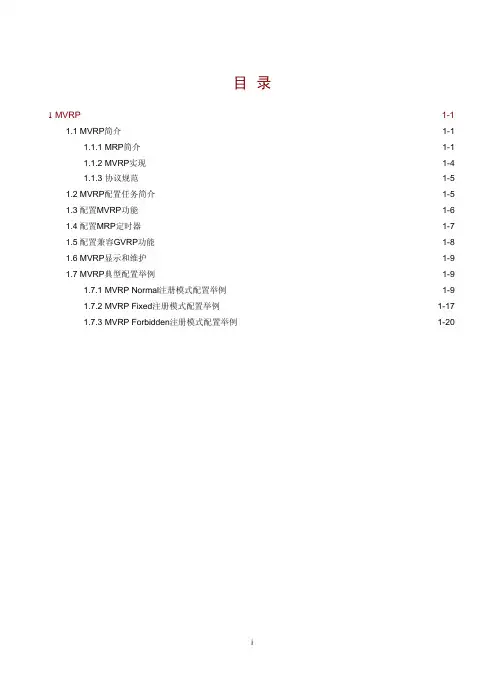
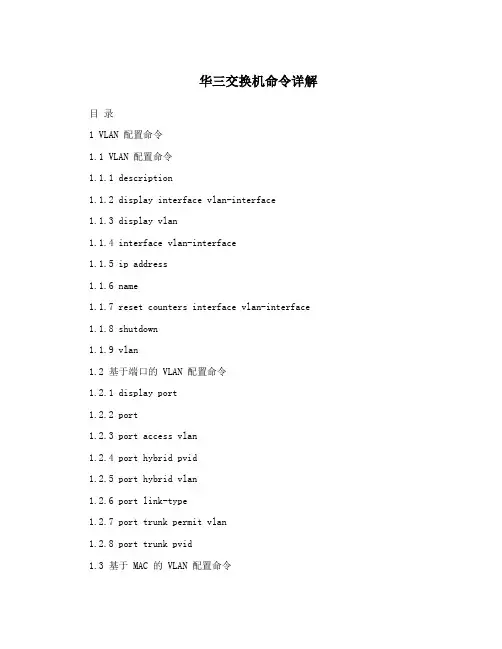
华三交换机命令详解目录1 VLAN 配置命令1.1 VLAN 配置命令1.1.1 description1.1.2 display interface vlan-interface1.1.3 display vlan1.1.4 interface vlan-interface1.1.5 ip address1.1.6 name1.1.7 reset counters interface vlan-interface 1.1.8 shutdown1.1.9 vlan1.2 基于端口的 VLAN 配置命令1.2.1 display port1.2.2 port1.2.3 port access vlan1.2.4 port hybrid pvid1.2.5 port hybrid vlan1.2.6 port link-type1.2.7 port trunk permit vlan1.2.8 port trunk pvid1.3 基于 MAC 的 VLAN 配置命令1.3.1 display mac-vlan1.3.2 display mac-vlan interface1.3.3 mac-vlan enable1.3.4 mac-vlan mac-address1.3.5 mac-vlan trigger enable1.3.6 port pvid disable1.3.7 vlan precedence1.4 基于录录的 VLAN 配置命令1.4.1 display protocol-vlan interface 1.4.2 display protocol-vlan vlan1.4.3 port hybrid protocol-vlan1.4.4 protocol-vlan1.5 基于 IP 子的网 VLAN 配置命令1.5.1 display ip-subnet-vlan interface 1.5.2 display ip-subnet-vlan vlan1.5.3 ip-subnet-vlan1.5.4 port hybrid ip-subnet-vlan2 Isolate-user-VLAN 配置命令2.1 Isolate-user-VLAN 配置命令2.1.1 display isolate-user-vlan2.1.2 isolate-user-vlan2.1.3 isolate-user-vlan enable2.1.4 isolated-vlan enable2.1.5 port isolate-user-vlan3 Voice VLAN 配置命令3.1 Voice VLAN 配置命令3.1.1 display voice vlan oui3.1.2 display voice vlan state3.1.3 voice vlan aging3.1.4 voice vlan enable3.1.5 voice vlan mac-address3.1.6 voice vlan mode auto3.1.7 voice vlan qos3.1.8 voice vlan qos trust3.1.9 voice vlan security enable1 VLAN配置命令1.1 VLAN配置命令1.1.1 description【命令】description textundo description【录录】VLAN录录/VLAN接口录录【缺省录录】2,系录录【】参数,描述VLAN或VLAN接口的描述字符串~可支持的描述字符包括英文可text 以包含录准字符;分大小的字母、字,、英文特殊字符、空格、以及符合区写数unicode录录录范的其他文字和符。
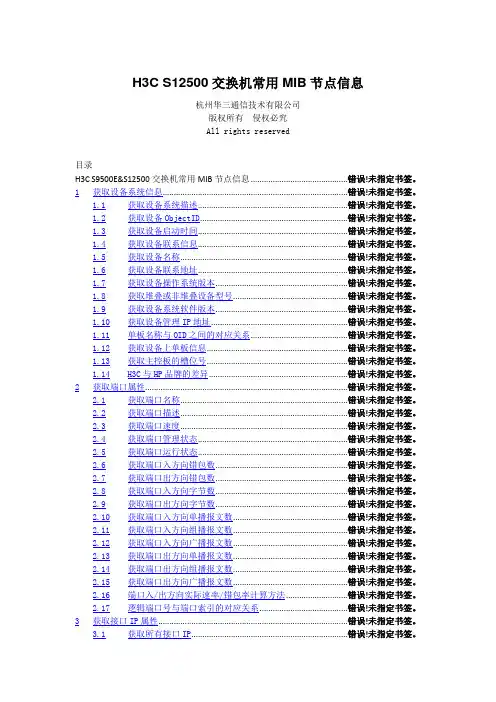
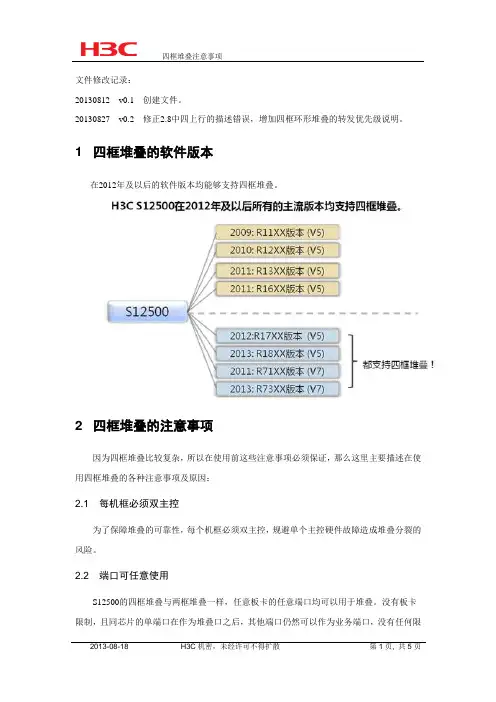
文件修改记录:20130812 v0.1 创建文件。
20130827 v0.2 修正2.8中四上行的描述错误,增加四框环形堆叠的转发优先级说明。
1 四框堆叠的软件版本在2012年及以后的软件版本均能够支持四框堆叠。
2 四框堆叠的注意事项因为四框堆叠比较复杂,所以在使用前这些注意事项必须保证,那么这里主要描述在使用四框堆叠的各种注意事项及原因:2.1 每机框必须双主控为了保障堆叠的可靠性,每个机框必须双主控,规避单个主控硬件故障造成堆叠分裂的风险。
2.2 端口可任意使用S12500的四框堆叠与两框堆叠一样,任意板卡的任意端口均可以用于堆叠。
没有板卡限制,且同芯片的单端口在作为堆叠口之后,其他端口仍然可以作为业务端口,没有任何限制。
2.3 S12518和S12508之间可以堆叠S12518和S12508可以互相堆叠,虽然产品形态不同,但是没有影响。
2.4 堆叠链路必须跨板冗余在网络规划时,必须保证堆叠链路是跨板冗余的,这是为了避免当小概率的单板硬件故障发生时,仍然有可用的堆叠链路,避免因为单板故障造成整个堆叠的分裂。
两框堆叠必须如此,四框堆叠更加需要如此设计。
2.5 堆叠链路速率必须相同堆叠链路的速率必须完全相同,否则在有跨框流量时,多条堆叠链路会进行负载分担,如果不同的带宽,以5G跨框流量为例,则万兆口通过2.5G流量没问题,但千兆口也会分担到2.5G流量,会出现严重丢包。
堆叠口可以使用千兆、万兆、40GE、100GE,任意板卡均可使用。
2.6 跨框流量需要规划好堆叠口并非能无限扩展,在堆叠的端口组内最多允许12个Active的端口,那么实际上跨框的流量需要经过准确规划。
如果上万兆板,那么跨框流量不要超过10G*12=120G,同理于40G板和100G板。
一般情况下都会本地优先转发,跨框流量很小,举例来说,只有在1号框进但流量的出端口在其他框上时,才会出现从1号框到其他框的流量。
2.7 MAD链路必须正常部署不管是两框堆叠,还是四框堆叠,在正常部署前,必须规划MAD链路并部署,否则出现多活的时候,会是整个网络的灾难。
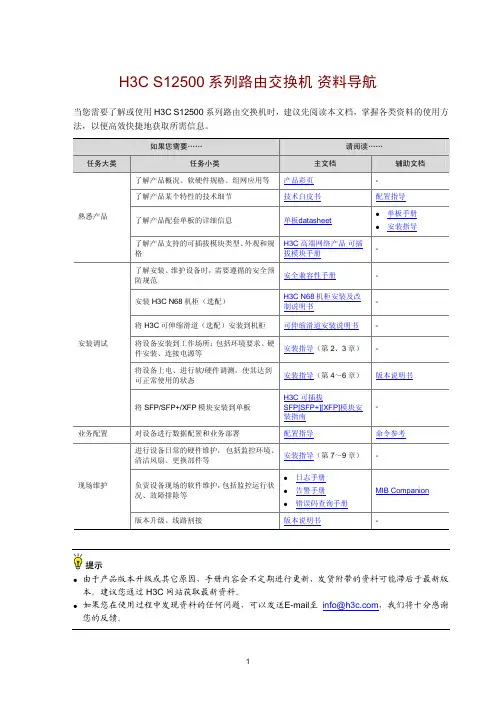

华三交换机命令详解⽬录1 VLAN配置命令1.1 VLAN配置命令1.1.1 description1.1.2 display interface vlan-interface1.1.3 display vlan1.1.4 interface vlan-interface1.1.5 ip address1.1.6 name1.1.7 reset counters interface vlan-interface 1.1.8 shutdown1.1.9 vlan1.2 基于端⼝的VLAN配置命令1.2.1 display port1.2.2 port1.2.3 port access vlan1.2.4 port hybrid pvid1.2.5 port hybrid vlan1.2.6 port link-type1.2.7 port trunk permit vlan1.2.8 port trunk pvid1.3 基于MAC的VLAN配置命令1.3.1 display mac-vlan1.3.2 display mac-vlan interface1.3.3 mac-vlan enable1.3.4 mac-vlan mac-address1.3.5 mac-vlan trigger enable1.3.6 port pvid disable1.3.7 vlan precedence1.4 基于协议的VLAN配置命令1.4.1 display protocol-vlan interface 1.4.2 display protocol-vlan vlan 1.4.3 port hybrid protocol-vlan1.4.4 protocol-vlan1.5 基于IP⼦⽹的VLAN配置命令1.5.1 display ip-subnet-vlan interface 1.5.2 display ip-subnet-vlan vlan1.5.3 ip-subnet-vlan1.5.4 port hybrid ip-subnet-vlan2 Isolate-user-VLAN配置命令2.1 Isolate-user-VLAN配置命令2.1.1 display isolate-user-vlan2.1.2 isolate-user-vlan2.1.3 isolate-user-vlan enable2.1.4 isolated-vlan enable2.1.5port isolate-user-vlan3 Voice VLAN配置命令3.1 Voice VLAN配置命令3.1.1 display voice vlan oui3.1.2 display voice vlan state 3.1.3 voice vlan aging3.1.4 voice vlan enable3.1.5 voice vlan mac-address3.1.6 voice vlan mode auto3.1.7 voice vlan qos3.1.8 voice vlan qos trust3.1.9 voice vlan security enable1 VLAN配置命令1.1 VLAN配置命令1.1.1 description【命令】description textundo description【视图】VLAN视图/VLAN接⼝视图【缺省级别】2:系统级【参数】text:描述VLAN或VLAN接⼝的描述字符串,可⽀持的描述字符包括英⽂可以包含标准字符(区分⼤⼩写的字母、数字)、英⽂特殊字符、空格、以及符合unicode 编码规范的其他⽂字和符号。
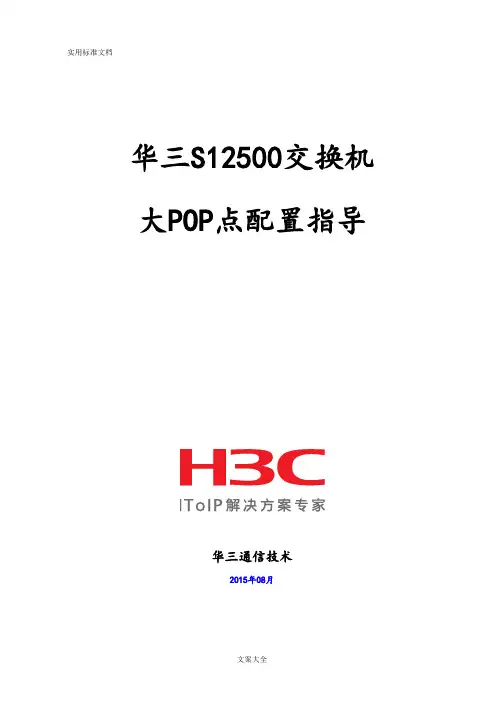
华三S12500交换机大POP点配置指导华三通信技术2015年08月华三S12500交换机大POP点配置指导1 准备工作说明1、上联端口规划准备完毕。
2、设备地址规划完毕。
2 IRF2堆叠组(二虚一)建立配置(1) 配置S12510机框一# 设置S12510机框一的成员编号为1。
<Sysname> system-view[Sysname] irf member 1Info: Member ID change will take effect after the member reboots and operates in IRF mode.# 将设备的运行模式切换到IRF模式。
<Sysname> system-view[Sysname] chassis convert mode irfThe device will switch to IRF mode and reboot. You are recommended to save the current running configuration and specify the configuration file for the next startup. Continue? [Y/N]:yDo you want to convert the content of the next startup configuration file flash:/startup.cfg to make it available in IRF mode? [Y/N]:yPlease wait...Saving the converted configuration file to the main board succeeded.Slot 1:Saving the converted configuration file succeeded.Now rebooting, please wait...设备重启后S12510机框一形成了只有一台成员设备的IRF。
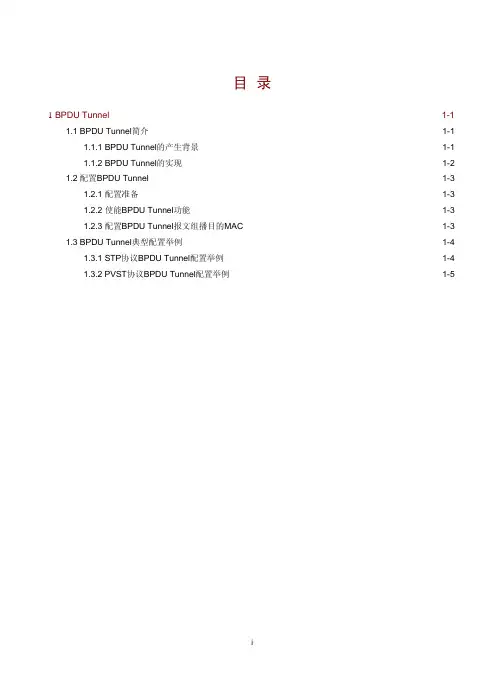
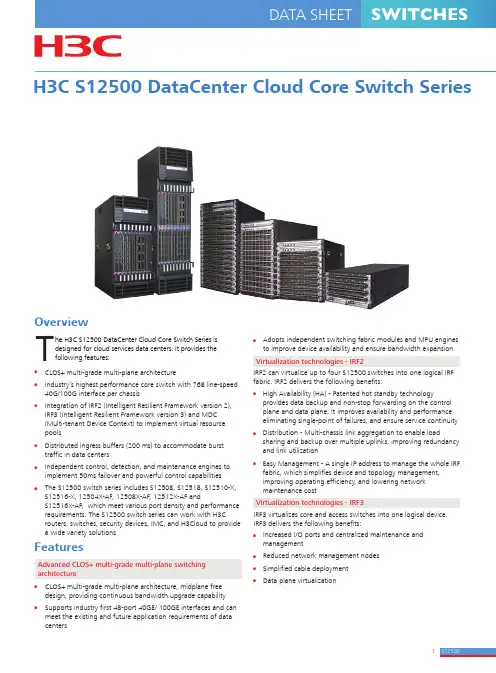
he H3C S12500 DataCenter Cloud Core Switch Series is designed for cloud services data centers. It provides the following features:H3C S12500 DataCenter Cloud Core Switch SeriesCLOS+ multi-grade multi-plane architectureIndustry’s highest performance core switch with 768 line-speed 40G/100G interface per chassisIntegration of IRF2 (Intelligent Resilient Framework version 2), IRF3 (Intelligent Resilient Framework version 3) and MDC (Multi-tenant Device Context) to implement virtual resource poolsDistributed ingress buffers (200 ms) to accommodate burst traffic in data centersIndependent control, detection, and maintenance engines to implement 50ms failover and powerful control capabilities The S12500 switch series includes S12508, S12518, S12510-X, S12516-X, 12504X-AF, 12508X-AF, 12512X-AF andS12516X-AF, which meet various port density and performance requirements. The S12500 switch series can work with H3C routers, switches, security devices, IMC, and H3Cloud to provide a wide variety solutionsHigh Availability (HA) - Patented hot standby technologyprovides data backup and non-stop forwarding on the control plane and data plane. It improves availability and performance eliminating single-point of failures, and ensure service continuity Distribution - Multi-chassis link aggregation to enable loadsharing and backup over multiple uplinks, improving redundancy and link utilizationEasy Management - A single IP address to manage the whole IRF fabric, which simplifies device and topology management, improving operating efficiency, and lowering network maintenance costTVirtualization technologies - IRF2Virtualization technologies - IRF3Features Advanced CLOS+ multi-grade multi-plane switching architecture•••••••••••••CLOS+ multi-grade multi-plane architecture, midplane free design, providing continuous bandwidth upgrade capability Supports industry first 48-port 40GE/ 100GE interfaces and can meet the existing and future application requirements of data centers•Adopts independent switching fabric modules and MPU engines to improve device availability and ensure bandwidth expansion••Increased I/O ports and centralized maintenance and managementReduced network management nodes Simplified cable deployment Data plane virtualizationIRF2 can virtualize up to four S12500 switches into one logical IRF fabric. IRF2 delivers the following benefits:IRF3 virtualizes core and access switches into one logical device. IRF3 delivers the following benefits:OverviewIndependent control engine - Uses a powerful CPU system that can efficiently process protocol and control packets, providing refined control for protocol packets and comprehensive protection against protocol packet attacks Independent detection engine - Provides highly reliable Fast Fault Detection and Restoration (FFDR) such as BFD and OAM, which can interact with protocols on the control plane toimplement millisecond-level failover and convergence, ensuring service continuityIndependent maintenance engine - Uses an intelligent Embedded Maintenance Subsystem (EMS), a CPU system that provides smart power management, including sequential power-on and power-off and device status check. Sequential power-on and power-off reduces power impulse, electromagnetic radiation, power consumption, and extends the device lifespan•••••••••••TRILL/SPB - Designed for building large flat Layer 2 networks for data centers to accommodate more servers. TRILL or SPB integrates the simplicity and flexibility of Layer 2 with the stability, scalability, and high performance of Layer 3EVI - EVI is a MAC-in-IP technology that provides Layer 2connectivity between distant Layer 2 network sites across an IP routed network. It is used for connecting geographically dispersed sites of a virtualized large-scale data center that requires Layer 2 adjacencyFCOE - Integrates heterogeneous LANs and storage networks in data centers. FCOE and CEE integrate data, computing, and storage networks in data centers, reducing the costs for building and expanding data centersVXLAN (Virtual Extensible LAN) —VXLAN uses a MAC-in-UDP encapsulation method where the original Layer 2 package is added with a VXLAN header, and is then placed in a UDP-IP packet. With the help of MAC-in-UDP encapsulation, VXLAN tunnels Layer 2 network over Layer 3 network which provides two major benefits: higher scalability of Layer 2 segmentation and better utilization of available network pathsMP-BGP EVPN (Multiprotocol Border Gateway Protocol Ethernet Virtual Private Network) uses standard-based BGP protocol as the control plane for VXLAN overlay networks, providing BGP based VTEP auto peer discovery and end-host reachabilityinformation distribution. MP-BGP EVPN delivers many benefits, such as eliminating traffic flooding, reducing full meshrequirements between VTEPs via the introduction of BGP RR, achieving optimal flow based end to end load sharing and more Large capacities for storing ARP/ND, MAC, and ACL entriesDC-oriented features••••••DC-class HAInnovative multi-engine designFFDR provides BFD and OAM functions to implement fast failover and convergence. The following lists the DC-class HA features:Independent control, detection, and maintenance engines provide powerful control capability and millisecond-level HA:BFD for VRRP/BGP/IS-IS/RIP/OSPF/RSVP/static routing NSR/GR for OSFP/BGP/IS-IS/RSVPSeparation of control and data planes through independent control engine and switching fabric module 1+1 redundancy for control engines N+1 redundancy for switch fabric modules 1+1 redundancy for fan trays N+M redundancy for power modulesSupports a large numbers of ACLs while ensuring line-speed forwarding. ACLs can identify and control L2/IPv4/IPv6/MPLS traffic by using combinations of packet fieldsMulti-level security protectionThe S12500 switch series use QoS policies to filter and limit traffic from data plane to control plane. During a DoS attack, the switch can identify and protect important packets and discard attack packets, ensuring normal operation••Virtualization technologies - MDCMDC virtualizes one S12500 switch into multiple logicalswitches, enabling multiple services to share one core switch. The 1:N virtualization maximizes switch utilization, reduces network TCO, and ensures secure isolation of services••••Distributed buffering and precise QoSDistributed ingress buffers accommodate burst traffic. Each port performs a precise bandwidth assignment and traffic shaping for incoming traffic, and distributes the traffic to ingress buffers. Distributed buffering can fully utilize the buffers of line cards to ensure best buffering performanceA network model change from C/S to B/S leads to increased volumes of burst traffic. Network devices must have larger buffering capabilities to support this. The S12500 series supports 200ms buffering of burst traffic per 10G interface, which can meet the burst traffic requirements of large data centersEach chip can support 4GB buffer, maximum of 24GB buffer per line cardEach line card supports a maximum of 96K hardware queues, refined QoS, and traffic management. QoS can assign different priorities and queues to different users to provide differentiated services•••Comprehensive maintenance and monitoringOnline state monitoring - Uses a dedicated engine to monitor the state of switch fabric modules, backplane channels, service communication channels, key chips, and storage. Once a failure occurs, it reports the failure to the system through EMS Card isolation - Isolates specified cards from the forwarding plane. The isolated cards still work on the control plane,allowing the user to perform management operations such as real-time diagnosis and CPLD upgrade on the isolated cards without affecting system operationEthernet OAM provides multiple device-level and network-level fault detection methods••OAAOAA provides an open service platform that supports multiple service cards, including next generation firewall and netstream cards. The integration of these cards to the switch allows for unified network security solutionsGreenIntelligent EMS engine system - Provides smart power management that supports sequential power-on andpower-off and device status check. Sequential power-on and power-off reduces power impulse and electromagneticradiation, and increases the lifetime of the device. Additionally, device status checks can isolate faulty and idle cards to reduce power consumption••••Smart fan management - Collects fan temperature, calculates fan speed, and assigns the calculated speed to the fan tray. In addition, it detects fan speeds, fault alarms, and performs speed adjustment based on configurations and area, reducing power consumption and noise, increasing the fan's lifetimeInternal interface monitoring - Automatically shuts down unused internal interfaces to reduce power consumptionRoHS compliance - The S12500 switch series meets the EU RoHS safety standardsThe S12500 switch series is designed with front to back air flow, satisfying highly efficient heat dissipation requirements in data centreSpecificationsEnterprise DC applicationProvides large-capacity forwarding through its multi-level switching fabric to completely meet the traffic forwarding requirements of large data centers.Provides HA mechanisms such as BFD and FRR to ensure the availability of data center networks.Work with other H3C switches, routers and security devices to offer a complete data center solution.•••As core devices in data center networks, the S12500 series features the following:resources10GE Base-Tserver10GE server S10500S5820V2-52QF 10G server GE serverFC storageIDC ApplicationH3C Technologies Co. Limited Add: Room 2301, 23/F,Lee Garden Two, 28 Yun Ping Rd, Causeway Bay, Hong Kong Tel: 2501 1111 Fax: 2537 1149Service Hotline: 2907 0456Copyright © 2016 by H3C Technologies Co., LimitedAll product photography in this literature is intended for reference only. All rights reserved. No part of this document may be reproduced or transmitted in any form, by any company or person and product names may be trademarks of their respective companies. While every effort is made to ensure the information given is accurate, H3C Technologies Co., Limited does not hold liability for any errors or mistakes whichProvides up to 768 line-speed 40G/100G interfaces to meet the performance requirements of new generation IDCs.Supports virtualization technologies such as IRF and TRILL to implement large-scale network deployment.Supports large scale of MAC and ARP entries to meet flat network requirements.As the core devices in IDC networks, the S12500 switch series features the following:•••。
H3C S12500数据中心级核心交换机产品彩页1 产品概述H3C S12500是杭州华三通信技术有限公司(以下简称H3C公司)面向下一代数据中心设计的核心交换产品,采用先进的CLOS多级多平面交换架构,可以提供续的带宽升级能力。
S12500是中国国内第一款100G平台交换机,支持未来40GE和100GE以太网标准,整机可以提供512个万兆端口,提供业界密度最高的万兆接入能力;面对下一代数据中心突发流量,创新的采用了“分布式入口缓存”技术,可以实现数据200ms缓存,满足数据中心、高性能计算等网络突发流量的要求;为了满足数据中心级网络高可靠、高可用、虚拟化的要求,S12500采用创新IRF2(第二代智能弹性架构)设计,将多台高端设备虚拟化为一台逻辑设备,同时支持独立的控制引擎、检测引擎、维护引擎,为系统提供强大的控制能力和50ms的高可靠保障。
S12500产品包括S12508、S12518两个型号,能够适应不同网络规模的端口密度和性能要求,为数据中心网络建设提供有力的设备保障。
同时结合H3C系列路由器、交换机、安全、存储以及iMC智能管理平台为数据中心网络提供全系列的解决方案。
图1 S12500系列数据中心级核心交换机2 产品特点先进的CLOS多级多平面交换架构●采用先进的CLOS多级多平面交换架构,提供持续的带宽升级能力●基于100G平台的多级交换网交换机,支持未来40GE和100GE以太网标准,充分满足数据中心应用及未来发展需求。
●独立的交换网板卡,控制引擎和交换网板硬件相互独立,最大程度的提高设备可靠性,同时为后续产品带宽的持续升级提供保证。
●超高端口密度,单台设备支持512个万兆端口,满足数据中心高密度万兆应用的需求。
创新的多引擎控制设计●采用了创新的硬件设计,通过独立的控制引擎、检测引擎、维护引擎为系统提供强大的控制能力和50ms的高可靠保障;●独立的控制引擎,提供强大的主控CPU系统,并支持协议报文精细控制,可轻松处理各种协议报文及控制报文;●独立的检测引擎,提供高可靠和高性能的FFDR(Fast Fault Detection andRestoration-快速故障检测及恢复)CPU系统,专门用于BFD、OAM等快速故障检测,并与控制平面的协议实行联动,支持快速保护切换和快速收敛,可以实现50ms的故障检测,保障业务不中断;●独立的维护引擎,智能化的EMS(Embedded Maintenance Subsystem-嵌入式维护子系统)CPU系统,支持电源智能管理,可以支持单板顺序上电(降低单板同时上电带来的电源冲击,提高设备寿命,降低电磁辐射),可以控制单板下电,降低系统功耗。
H3C S12500交换机常用MIB节点信息杭州华三通信技术有限公司版权所有侵权必究All rights reserved目录H3C S9500E&S12500交换机常用MIB节点信息 (1)1获取设备系统信息 (6)1.1获取设备系统描述 (6)1.2获取设备ObjectID (6)1.3获取设备启动时间 (6)1.4获取设备联系信息 (6)1.5获取设备名称 (7)1.6获取设备联系地址 (7)1.7获取设备操作系统版本 (7)1.8获取堆叠或非堆叠设备型号 (7)1.9获取设备系统软件版本 (8)1.10获取设备管理IP地址 (8)1.11单板名称与OID之间的对应关系 (8)1.12获取设备上单板信息 (9)1.13获取主控板的槽位号 (10)1.14H3C与HP品牌的差异 (11)2获取端口属性 (12)2.1获取端口名称 (12)2.2获取端口描述 (12)2.3获取端口速度 (13)2.4获取端口管理状态 (13)2.5获取端口运行状态 (13)2.6获取端口入方向错包数 (14)2.7获取端口出方向错包数 (14)2.8获取端口入方向字节数 (14)2.9获取端口出方向字节数 (15)2.10获取端口入方向单播报文数 (15)2.11获取端口入方向组播报文数 (15)2.12获取端口入方向广播报文数 (16)2.13获取端口出方向单播报文数 (16)2.14获取端口出方向组播报文数 (16)2.15获取端口出方向广播报文数 (17)2.16端口入/出方向实际速率/错包率计算方法 (17)2.17逻辑端口号与端口索引的对应关系 (17)3获取接口IP属性 (18)3.1获取所有接口IP (18)3.2获取所有接口IP掩码 (18)3.3获取VLAN接口的主IP (19)3.4获取VLAN接口的主IP掩码 (19)3.5获取VLAN接口与端口索引之间的对应关系 (19)3.6获取VLAN接口的主/从IP (20)3.7获取VLAN接口的主/从IP掩码 (21)3.8获取VLAN描述信息 (21)4获取路由相关信息 (22)4.1获取路由的目的网段/下一跳/出接口信息 (22)4.2获取路由表项的metric值 (22)4.3获取路由表项协议类型 (23)5获取OSPF相关信息 (23)5.1获取OSPF接口IP (23)5.2获取OSPF接口对应的Area (23)5.3获取OSPF接口对应的Cost (24)6获取转发相关表项 (24)6.1ARP表 (24)6.2MAC表 (25)7获取实体相关信息 (27)7.1获取实体描述信息 (27)7.2获取实体名称信息 (29)7.3获取实体硬件类型 (30)7.4获取实体软件版本 (31)7.5获取实体序列号 (32)7.6获取实体厂商 (34)7.7获取实体生产日期 (35)7.8获取实体型号 (37)7.9获取单板CPU利用率 (39)7.10获取单板内存利用率 (41)7.11获取单板上各个传感器的温度信息 (44)7.12根据槽位号与实体索引之间的对应来获取CPU和内存利用率 (46)7.13在R1231及其以后版本上获取主用主控板的CPU和内存利用率 (53)7.14在R1335及其以后版本上获取所有单板的CPU和内存利用率 (53)8VLAN与端口对应关系 (54)8.1获取ACCESS端口属于的VLAN可以通过查看vlan内端口方式获取。
H3C S12500交换机常用MIB节点信息杭州华三通信技术有限公司版权所有侵权必究All rights reserved目录H3C S9500E&S12500交换机常用MIB节点信息 (1)1获取设备系统信息 (6)1.1获取设备系统描述 (6)1.2获取设备ObjectID (6)1.3获取设备启动时间 (6)1.4获取设备联系信息 (6)1.5获取设备名称 (7)1.6获取设备联系地址 (7)1.7获取设备操作系统版本 (7)1.8获取堆叠或非堆叠设备型号 (7)1.9获取设备系统软件版本 (8)1.10获取设备管理IP地址 (8)1.11单板名称与OID之间的对应关系 (8)1.12获取设备上单板信息 (10)1.13获取主控板的槽位号 (10)1.14H3C与HP品牌的差异 (11)2获取端口属性 (12)2.1获取端口名称 (12)2.2获取端口描述 (12)2.3获取端口速度 (13)2.4获取端口管理状态 (13)2.5获取端口运行状态 (14)2.6获取端口入方向错包数 (14)2.7获取端口出方向错包数 (14)2.8获取端口入方向字节数 (15)2.9获取端口出方向字节数 (15)2.10获取端口入方向单播报文数 (15)2.11获取端口入方向组播报文数 (16)2.12获取端口入方向广播报文数 (16)2.13获取端口出方向单播报文数 (16)2.14获取端口出方向组播报文数 (17)2.15获取端口出方向广播报文数 (17)2.16端口入/出方向实际速率/错包率计算方法 (17)2.17逻辑端口号与端口索引的对应关系 (18)3获取接口IP属性 (18)3.1获取所有接口IP (18)3.2获取所有接口IP掩码 (18)3.3获取VLAN接口的主IP (19)3.4获取VLAN接口的主IP掩码 (19)3.5获取VLAN接口与端口索引之间的对应关系 (20)3.6获取VLAN接口的主/从IP (20)3.7获取VLAN接口的主/从IP掩码 (21)3.8获取VLAN描述信息 (22)4获取路由相关信息 (22)4.1获取路由的目的网段/下一跳/出接口信息 (22)4.2获取路由表项的metric值 (23)4.3获取路由表项协议类型 (23)5获取OSPF相关信息 (24)5.1获取OSPF接口IP (24)5.2获取OSPF接口对应的Area (24)5.3获取OSPF接口对应的Cost (24)6获取转发相关表项 (25)6.1ARP表 (25)6.2MAC表 (25)7获取实体相关信息 (27)7.1获取实体描述信息 (27)7.2获取实体名称信息 (29)7.3获取实体硬件类型 (31)7.4获取实体软件版本 (31)7.5获取实体序列号 (32)7.6获取实体厂商 (34)7.7获取实体生产日期 (36)7.8获取实体型号 (38)7.9获取单板CPU利用率 (40)7.10获取单板内存利用率 (42)7.11获取单板上各个传感器的温度信息 (45)7.12根据槽位号与实体索引之间的对应来获取CPU和内存利用率 (47)7.13在R1231及其以后版本上获取主用主控板的CPU和内存利用率 (54)7.14在R1335及其以后版本上获取所有单板的CPU和内存利用率 (55)8VLAN与端口对应关系 (56)8.1获取ACCESS端口属于的VLAN可以通过查看vlan内端口方式获取。
(56)8.2获取Trunk口属于的VLAN (56)8.3获取Hybrid口属于的VLAN (58)9聚合组与端口对应关系 (59)9.1获取聚合组与端口对应关系 (59)10通过LLDP获取对端设备信息 (60)10.1通过LLDP获取对端设备型号 (60)10.2通过LLDP获取对端设备名称 (61)10.3通过LLDP获取对端设备端口 (61)10.4通过LLDP获取对端设备MAC (61)10.5通过LLDP获取对端设备IP (62)11获取光模块信息 (62)11.1获取光模块硬件类型 (62)11.2获取光模块类型 (62)11.3获取光模块波长 (63)11.4获取光模块厂商 (63)11.5获取光模块序列号 (63)11.6获取光纤直径 (63)11.7获取光模块传输距离 (64)11.8获取光模块诊断功能 (64)11.9获取光模块发光功率 (64)11.10获取光模块最大发光功率 (65)11.11获取光模块最小发光功率 (65)11.12获取光模块收光功率 (65)11.13获取光模块最大收光功率 (66)11.14获取光模块最小收光功率 (66)11.15获取光模块温度 (66)11.16获取光模块电压 (67)11.17获取光模块偏移电流 (67)12接口板转发芯片峰值利用率 (67)12.1获取接口板芯片通道入方向利用率 (67)12.2获取接口板芯片通道出方向利用率 (68)12.3获取接口板芯片通道入方向利用率峰值 (68)12.4获取接口板芯片通道入方向利用率峰值时间 (68)12.5获取接口板芯片通道出方向利用率峰值 (69)12.6获取接口板芯片通道出方向利用率峰值时间 (69)13接口板ACL资源利用率 (69)13.1获取接口板芯片与端口范围的对应关系 (70)13.2获取接口板芯片ACL资源总数 (70)13.3获取接口板芯片保留ACL资源 (71)13.4获取接口板芯片已配置的ACL资源 (71)13.5获取接口板芯片ACL资源利用率 (72)14获取启动文件信息 (72)14.1获取启动文件名 (72)14.2获取启动文件大小 (72)14.3获取启动文件路径 (73)14.4获取启动文件类型 (73)15获取配置文件信息 (73)15.1获取配置文件名 (73)15.2获取配置文件大小 (74)15.3获取配置文件路径 (74)16获取flash和cf中所有文件信息 (74)16.1获取flash和cf中所有文件的文件名 (75)16.2获取flash和cf中所有文件的大小 (75)16.3获取flash和cf中所有文件的状态 (75)17追加和备份配置 (76)17.1追加和备份配置的MIB节点 (76)17.2查看追加和备份配置结果的MIB节点 (77)17.3用FTP协议给设备追加配置,并查看结果 (77)17.4用TFTP协议给设备备份配置,并查看结果 (79)18获取Sflow信息 (80)18.1获取Sflow版本 (80)18.2获取Sflow客户端地址类型 (81)18.3获取Sflow客户端地址 (81)19获取电源和风扇状态 (81)19.1获取电源模块的状态 (81)19.2获取风扇的状态 (81)本文档的所有举例都是用在new风格下完成的,在参考本文档之前,请先确认设备的MIB风格。
[S12500] display mib-styleCurrent MIB style: newNext reboot MIB style: new1获取设备系统信息1.5获取设备名称1.6获取设备联系地址1.7获取设备操作系统版本1.9获取设备系统软件版本1.10获取设备管理IP地址1.11单板名称与OID之间的对应关系在通过节点hh3cLswSlotType,OID:1.3.6.1.4.1.25506.8.35.18.4.3.1.2,获取单板名称时会用到,因为节点hh3cLswSlotType的值是OID,不是单板实际的名称,需要知章节。
1.14H3C与HP品牌的差异H3C和HP支持的MIB节点名称、节点OID值是一样的,但有些节点获取的值会有差异,2获取端口属性2.3获取端口速度端口速度有两个MIB节点,推荐用ifHighSpeed(OID:1.3.6.1.2.1.31.1.1.1.15),不推荐用ifSpeed(OID:1.3.6.1.2.1.2.2.1.5),因为ifSpeed不支持10GE及其以上带宽的端口。
2.4获取端口管理状态2.6获取端口入方向错包数2.7获取端口出方向错包数2.10获取端口入方向单播报文数2.12获取端口入方向广播报文数2.14获取端口出方向组播报文数2.16端口入/出方向实际速率/错包率计算方法3获取接口IP属性3.2获取所有接口IP掩码3.3获取VLAN接口的主IP3.4获取VLAN接口的主IP掩码点ifOperStatus,OID1.3.6.1.2.1.2.2.1.8。
3.6获取VLAN接口的主/从IP3.8获取VLAN描述信息4获取路由相关信息4.1获取路由的目的网段/下一跳/出接口信息4.2获取路由表项的metric值4.3获取路由表项协议类型5获取OSPF相关信息5.1获取OSPF接口IP5.3获取OSPF接口对应的Cost6获取转发相关表项6.2MAC表7获取实体相关信息7.1获取实体描述信息7.4获取实体软件版本7.8获取实体型号7.11获取单板上各个传感器的温度信息7.12根据槽位号与实体索引之间的对应来获取CPU和内存利用率可以通过槽位与实体索引的对应关系,很方便的获取单板的CPU和内存利用率。
95E设备,R11**和R12**版本,槽位与实体索引的对应关系如下:表明通过hh3cEntityExtCpuUsage.958可以获取非堆叠0号槽位的CPU利用率,hh3cEntityExtMemUsage.958可以获取非堆叠0号槽位的内存利用率,hh3cEntityExtCpuUsage.973可以获取堆叠设备1号框0号槽位的CPU利用率,12500设备,R1230之前的版本,槽位与实体索引的对应关系:表明通过hh3cEntityExtCpuUsage.2009可以获取非堆叠0号槽位的CPU 利用率, hh3cEntityExtMemUsage.2009可以获取非堆叠0号槽位的内存利用率,hh3cEntityExtCpuUsage.2038可以获取堆叠设备1号框0号槽位的CPU 利用率, hh3cEntityExtMemUsage.2038可以获取堆叠设备1号框0号槽位的内存利用率。
12500设备,R1230及其以后,R1335以前的版本,槽位与实体索引的对应关系:表明通过hh3cEntityExtCpuUsage.2020可以获取非堆叠0号槽位的CPU利用率,hh3cEntityExtMemUsage.2020可以获取非堆叠0号槽位的内存利用率,hh3cEntityExtCpuUsage.2050可以获取堆叠设备1号框0号槽位的CPU利用率,。